Looking for a healthy sugar alternative for your coffee? In this post, you’ll learn how to sweeten coffee without sugar. We cover 19 natural and artificial sweeteners, plus spices and healthy fats.
You’ll also learn how to choose the best beans and brew methods for a better flavor (so you might not even want any sweetener).
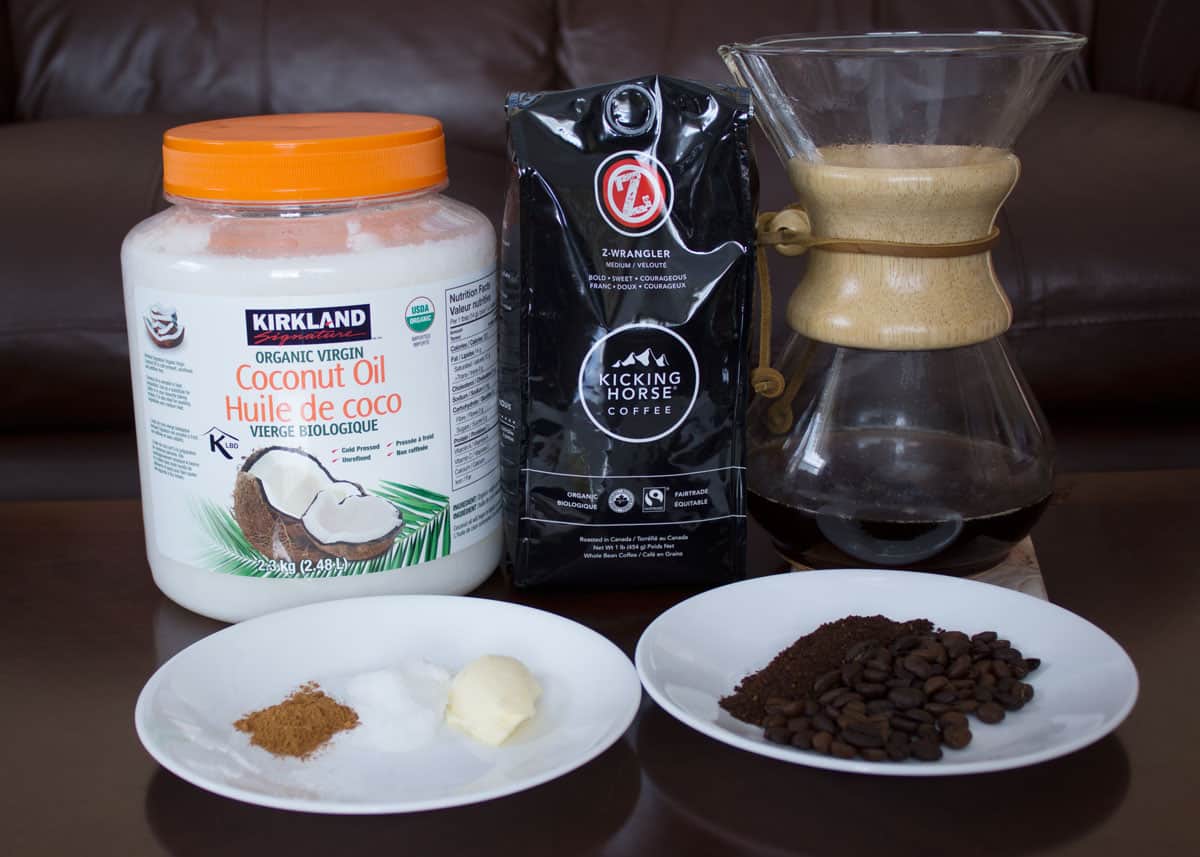
Coffee Without Sugar: Healthy Guide
Before we talk about how to sweeten coffee without sugar it’s good to know if we need to:
- make sweeter tasting coffee without adding anything
- find a sugar alternative.
Both are possible and you’ll find some good tips here.
There are so many options for skipping the sugar in your coffee (and different reasons for doing) that we’re breaking this down into 5 specific sections.
- Natural sugar alternatives: honey, maple syrup, agave, and coconut sugar…
- Sweeten with things that aren’t sweet: Like healthy fats and spices
- Artificial coffee sweeteners: I guess these have a place, but I’m not a big fan.
- Coffee bean selection: Choosing the right variety and roast will improve the flavor so you might not even want any sweetener.
- Brew methods: Make a more pleasant cup without adding anything.
I won’t be talking about things like milk or creamers with added sugar, brown sugar, molasses, treacle, jaggery, cane syrup… because they all either have, or come from cane sugar – the same as white sugar does. So no useless info.
Healthy Coffee Sweeteners?
Anything that claims to be healthy can be debated. I’m not promising that everything here is healthy for everyone. Age, health problems, and personal preferences all affect what we view as healthy.
In this post, I’m confident that there will be a sweetener or brew method for most people that is healthier than white sugar.
Have one to add? Or maybe have an opinion about this? Join me in the comments at the end of the post.

7 Natural Sugar Alternatives for Coffee
Using something sweet in your coffee other than sugar can have some benefits. For example, it may be lower on the glycemic index and therefore better for your blood glucose concentration.
You’ll also be experiencing some great new flavor combinations.
But it’s always best to do careful research when it comes to your personal health because we’re all different. Just because something is natural and may be less refined than white sugar may not mean it’s better for your health, including the options on the following list.
Some of the top natural sugar alternatives are:
- Maple syrup
- Honey
- Agave syrup
- Coconut sugar
- Date sugar
- Beet sugar
- Stevia
Let’s start with my favorite:
1. Maple syrup
- Where it comes from: Maple trees
- How it’s made: The sap is collected from the trees and then boiled down into a concentrate. Real maple syrup may be refined less than some other options. Watch out for things labeled maple syrup which are not pure.
- Why you might want to try it: It’s lower on the glycemic index with a GI of about 54 (compared to white sugar at about 65) and according to this article has antioxidants, minerals, and vitamins that you may not find in other sweeteners.
- How many calories? One teaspoon has 17 calories – compared to sugar with 16.
- Flavor notes: You may taste some caramel, vanilla, and nutty flavors.
On a personal note, I choose maple syrup over honey and some of the others because I prefer the flavor and because I have IBS. Maple syrup doesn’t have fructose which hurts my digestive system, but honey, agave, and coconut sugar do.
2. Honey
- Where it comes from: Honey bees
- How it’s made: It is collected from the beehives and then filtered. Unless the honey is raw it will go through more processing (like pasteurization) that can destroy some of the benefits.
- Why you might want to try it: It’s lower on the glycemic index with a GI of about 58 (compared to white sugar at 65). Raw honey has amino acids, vitamins, enzymes and minerals. But as this article mentions these things can be destroyed as it undergoes processing. Sometimes other things are added (like sugar or corn syrup) to cut costs so you may need to do a little homework when choosing which honey to use in your coffee.
- How many calories? One teaspoon has 21 calories compared to sugar with 16.
- Flavor notes: This can depend on where the bees collected the nectar. You could taste hints of fruit or floral, some spices and some nutty flavors.
Learn more about putting honey in your coffee here.
3. Agave Syrup
- Where it comes from: A cactus-like succulent plant, usually the blue agave plant.
- How it’s made: The leaves are cut and the juice extracted, filtered, heated, and concentrated into a syrup. Enzymes may also be added to help break it down.
- Why you might want to try it: It’s lower on the glycemic index with a GI of about 15 (compared to white sugar at 65). It’s 1.5 times sweeter than sugar, so you’ll need less.
- How many calories? One teaspoon has 21 calories compared to sugar with 16.
- Flavor notes: It tastes similar to honey but with a more neutral flavor.
I don’t use agave syrup because of the fructose. This article talks about agave and its potential downside if you’re interested.

4. Coconut Sugar
- Where it comes from: The sap from flowers of the coconut palm tree.
- How it’s made: The sap is boiled and the water evaporated until it has a granulated consistency.
- Why you might want to try it: It’s lower on the glycemic index with a GI of about 35 (compared to white sugar at 65). It contains more beneficial nutrients than white sugar.
- How many calories? One teaspoon has 15 calories compared to sugar with 16.
- Flavor notes: It tastes similar to brown sugar, mild and pleasant.
5. Date Sugar/Syrup
- Where it comes from: Dates.
- How it’s made: For sugar, the dates are dehydrated and ground to a granulated texture, this may leave a little grit in your cup. For syrup, the dates are boiled and the juice is filtered then boiled again until it thickens into a syrup consistency.
- Why you might want to try it: Date sugar is lower on the glycemic index with a GI of about 44 – 55 may be higher depending on the type of dates used but not as high as white sugar at 65. It also has a little bit of good stuff in there like fiber, potassium, B vitamins, and iron, but nothing in significant amounts. The heat required to make syrup reduces some of the nutritional value.
- How many calories? One teaspoon has 15 calories compared to sugar with 16. The syrup is a little higher with 18 calories.
- Flavor notes: It is similar to brown sugar with hints of butterscotch.
6. Beet Sugar
- Where it comes from: Sugar beet plants (a root vegetable).
- How it’s made: The juice is extracted by slicing the beets, it’s then heated, purified and concentrated into a syrup. The syrup is crystallized to a granulated texture.
- Why you might want to try it: According to this article beet sugar is so close to white sugar that you may choose not to use it. In fact, about 55-60% of the sugar in the U.S. comes from sugar beets. It’s just a little lower on the glycemic index with a GI of about 61 (compared to white sugar at 65) not really significant enough to make a difference. If you’re concerned about animal products you may choose this over white sugar because bone char is not used in manufacturing it.
- How many calories? One teaspoon has 15 calories compared to sugar with 16.
- Flavor notes: It is similar to white sugar but with a less pleasant aftertaste and aroma.
7. Stevia
Some say stevia is an artificial sweetener because what you buy at the store is most likely processed in a lab, it may have other sweeteners added as well.
But you can also grow stevia yourself, dry and crush the leaves. So I feel good about including it in the natural sugar alternative section.
- Where it comes from: The leaves of the Stevia rebaudiana plant.
- How it’s made: This can depend on how you consume it. It comes as a liquid or a powder. But generally speaking, the leaves are picked, dried, then steeped. That liquid is filtered, purified and concentrated. You can read more here.
- Why you might want to try it: It’s low on the glycemic index with a GI of 0 (compared to white sugar at 65). It is 10 – 15 times sweeter than sugar.
- How many calories? One teaspoon has 0 calories compared to sugar with 16.
- Flavor notes: It has a strong flavor with some licorice notes, and can have a bitter aftertaste. Packaged stevia often has other things added to even out the flavor. Liquid stevia usually has less added to it. Stevia takes some getting used to, and a little goes a long way so use it sparingly, very sparingly in your coffee. This article has some helpful tips on getting used to the unique flavor of stevia.
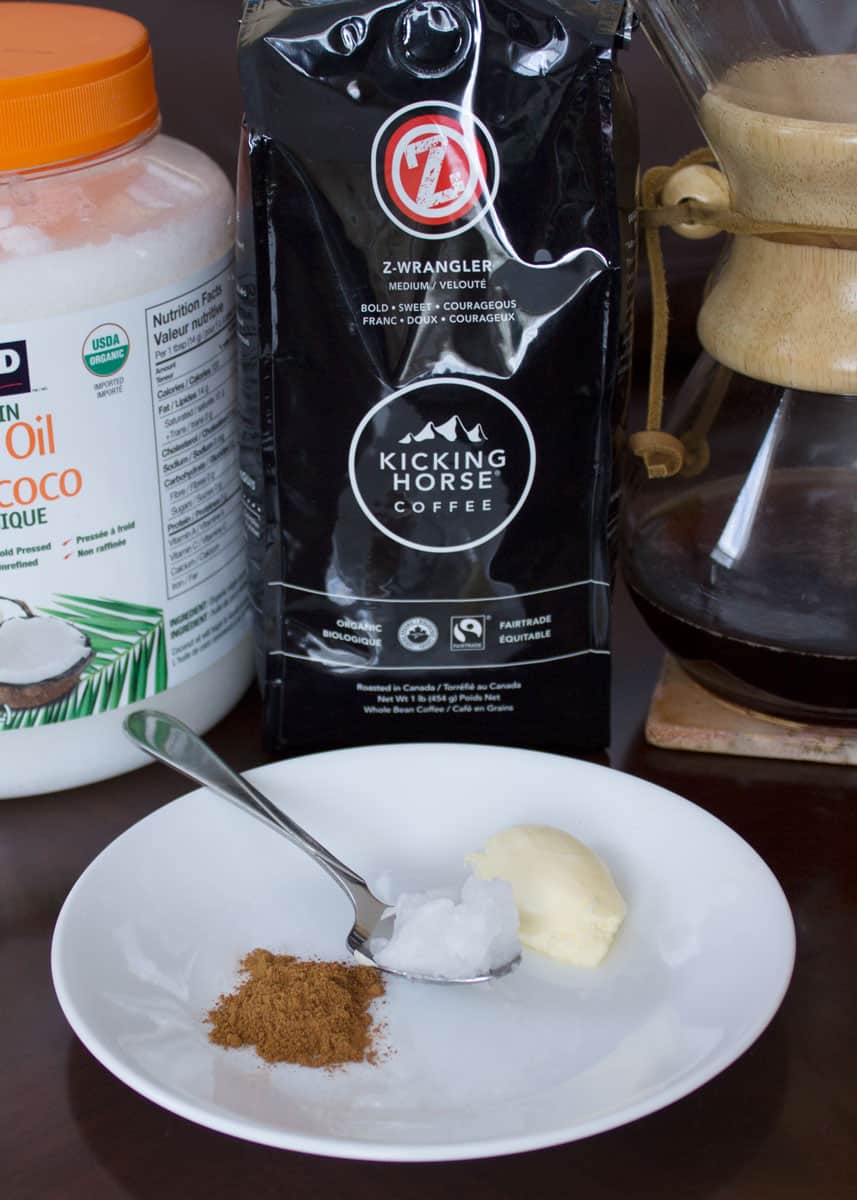
6 Things to Sweeten (That Aren’t Sweet)
You can also add a pleasant (sweeter) flavor to your coffee by adding something that isn’t sweet. This may be helpful for diabetic coffee lovers, and others watching the glycemic index.
A couple of the suggestions here are oils/fats, and it’s always best to keep a close eye on the amount of fat you’re consuming. If you start adding it to your coffee you’ll probably need to use less of it in other areas.
A few sugar-free things to try:
- Coconut oil: I add 1 tsp of unrefined cold-pressed coconut oil to my Chemex brewed coffee every morning. It adds a pleasant flavor and I don’t need sugar. I don’t blend it, but you could.
- Coconut cream: Unsweetened coconut cream will add the flavor of coconut and make your coffee nice and creamy.
- Butter: Butter may be a good option. It’s usually added to the coffee and then put in a blender to make a creamy coffee, 1 tsp should do the trick. This tastes surprisingly good, even adds a little froth to the top of your coffee. Butter is not a healthy oil like coconut, so I go with the coconut.
- Vanilla: Vanilla goes so well with coffee, and as long as you get an unsweetened extract, you’re good to go.
- Cinnamon and other spices: Cinnamon is a popular choice and the flavor mixes well with medium roasted coffee. Just a pinch of cinnamon will make a difference, it’s pretty powerful stuff.
- Cocoa powder: This will add a nice chocolate flavor to your coffee. Make sure to get pure, unsweetened cocoa powder. One teaspoon or less will probably be enough.
The above things will help if you follow the recommendations in this post about the type of coffee, brew method, roast level, and grind size (look for this near the end of the post).
Adding the things listed above to bitter over-extracted coffee won’t help very much.
Now we’ll talk about some artificial sweeteners.
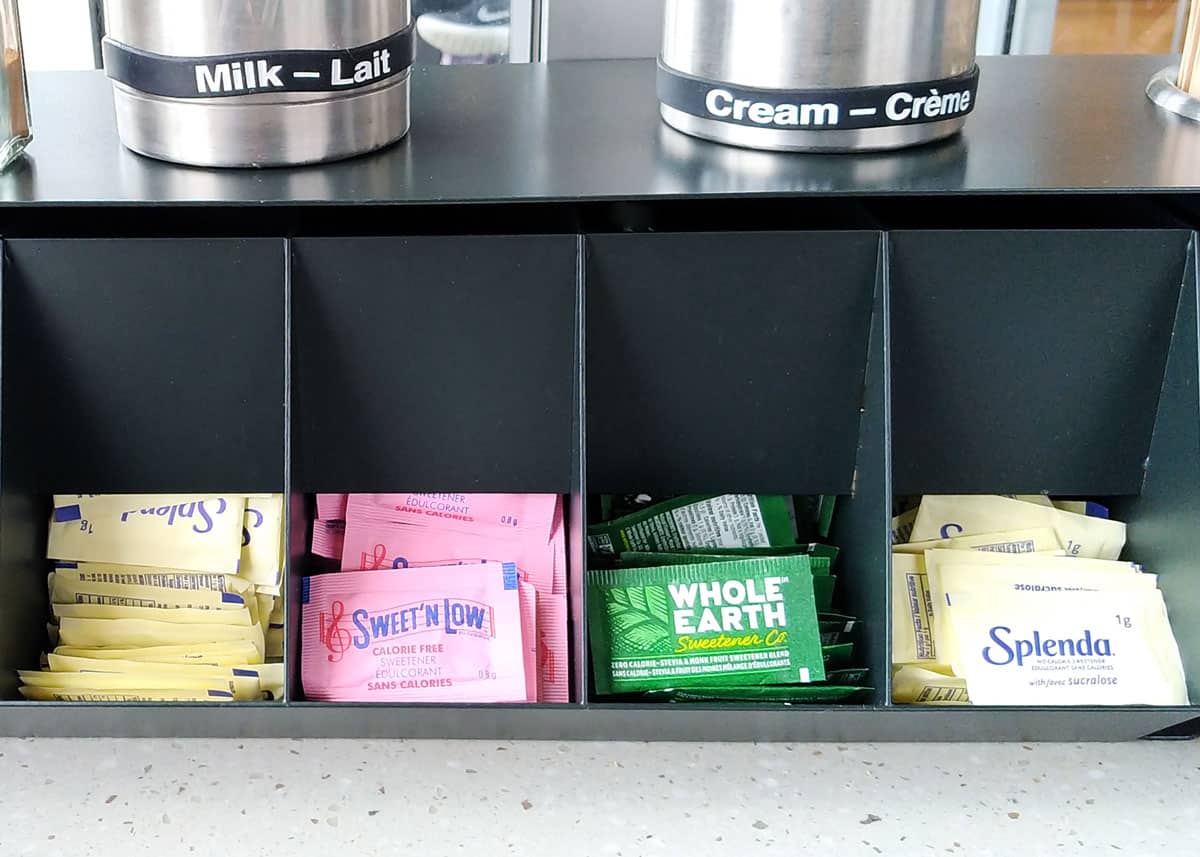
3 Artificial Sweeteners for Coffee
Artificial sweeteners are synthetic (made in a lab) rather than naturally occurring.
They make me nervous and often taste weird so I hardly ever use them. Stevia tastes kind of weird too, but I’m more comfortable with it so I’ll use it over the artificial stuff if I have to.
Artificial sweeteners can also mess up the bacteria in your gut, and when you already have digestive problems introducing them may not be the best idea.
I’m including artificial sweeteners in this post because lots of other people like to use them.
A few of the top artificial sweeteners for coffee are:
- Aspartame
- Saccharin
- Sucralose
1. Aspartame
- Where it comes from: The amino acids aspartic acid and phenylalanine. You’ve probably seen it as Equal and NutraSweet
- How it’s made: Aspartic acid and phenylalanine are chemically combined.
- Why you might want to try it: It’s low on the glycemic index with a GI of 0 (compared to white sugar at 65). It has 4 calories per gram (the same as sugar) but is 200 times sweeter than sugar so is called a low-calorie sweetener.
- Flavor notes: Does not have the bitter, metallic aftertaste that some artificial sweeteners have.
2. Saccharin
- Where it comes from: Chemicals o-toluenesulfonamide, and or phthalic anhydride.
- How it’s made: Made by the oxidation of o-toluenesulfonamide, and or phthalic anhydride. You’ve probably seen it as Sweet Twin, Necta Sweet, and Sweet ‘N Low.
- Why you might want to try it: It’s low on the glycemic index with a GI of 0 (compared to white sugar at 65). It has 0 calories and is 200-700 times sweeter than sugar.
- Flavor notes: It has a bitter, metallic aftertaste.
3. Sucralose
- Where it comes from: Made from white sugar. You’ve probably seen it as Splenda.
- How it’s made: Chemically processed by replacing some hydrogen-oxygen groups with chlorine atoms.
- Why you might want to try it: It’s low on the glycemic index with a GI of 0 (compared to white sugar at 65). It has 0 calories and is 400 – 700 times sweeter than sugar.
- Flavor notes: Does not have the same bitter aftertaste as some other artificial sweeteners.

Coffee Bean Selection
Now comes the best part, the most important part of sweeter coffee – the coffee itself and how the way you brew it can make a difference.
What kind of coffee beans taste sweeter? For sweeter coffee we’re looking for these three things:
- Arabica coffee
- Medium roast
- Medium grind
Here’s more about how to brew coffee that tastes good.

How Will You Sweeten Your Coffee?
At this point, you may be wondering what the healthiest alternative to sugar is. To a large degree that depends on you and how your body deals with natural and artificial sweeteners.
I think choosing a medium roast high-quality arabica coffee and brewing with a Chemex or a cold brew method will start you off right.
You may not need to add anything after that. But if you’re like me a teaspoon of cold-pressed unrefined coconut oil will do the trick. And if I’m in the mood for sweeter coffee I add a teaspoon of maple syrup.
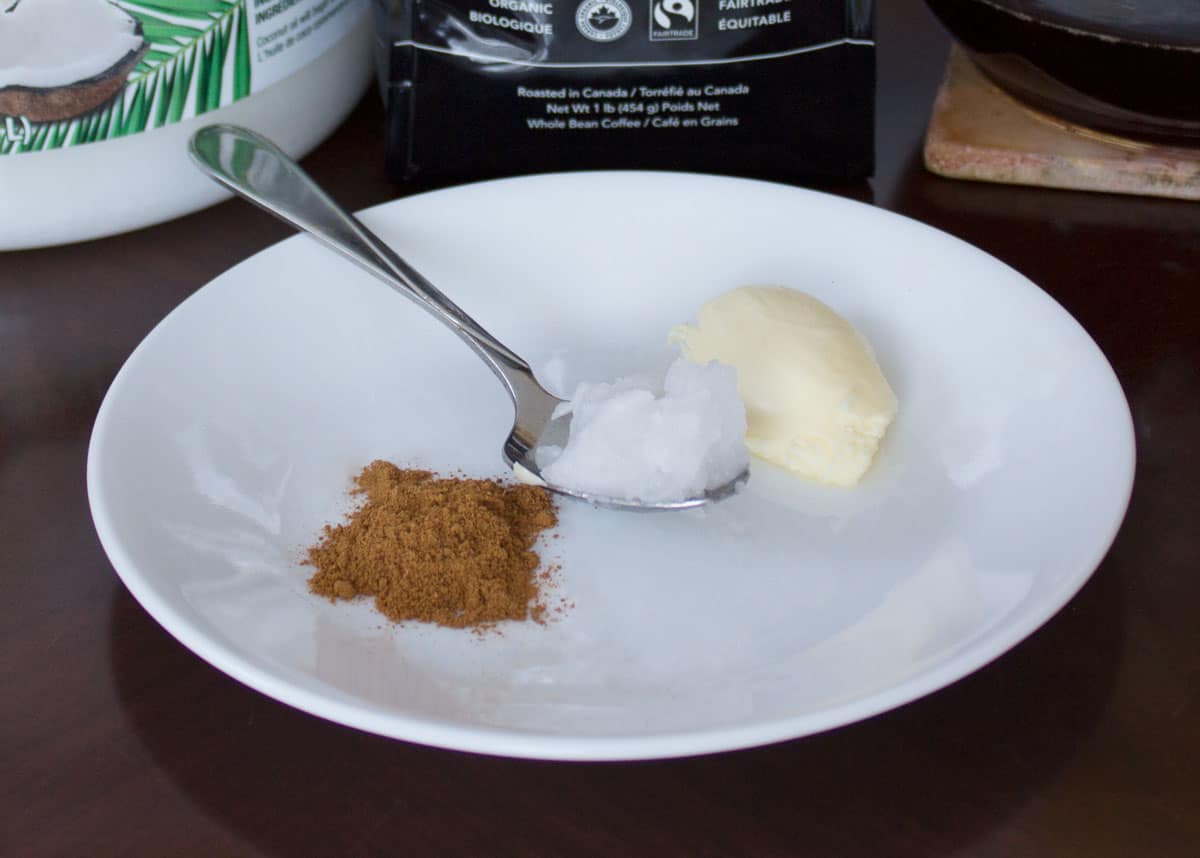
The amount of coffee you drink and your other food choices throughout the day will also influence your decision.
I only drink a cup or two a day so a teaspoon of coconut oil here and a teaspoon of maple syrup there doesn’t make much of a difference. I don’t eat many other sweet or fatty treats so I’m doing pretty good.
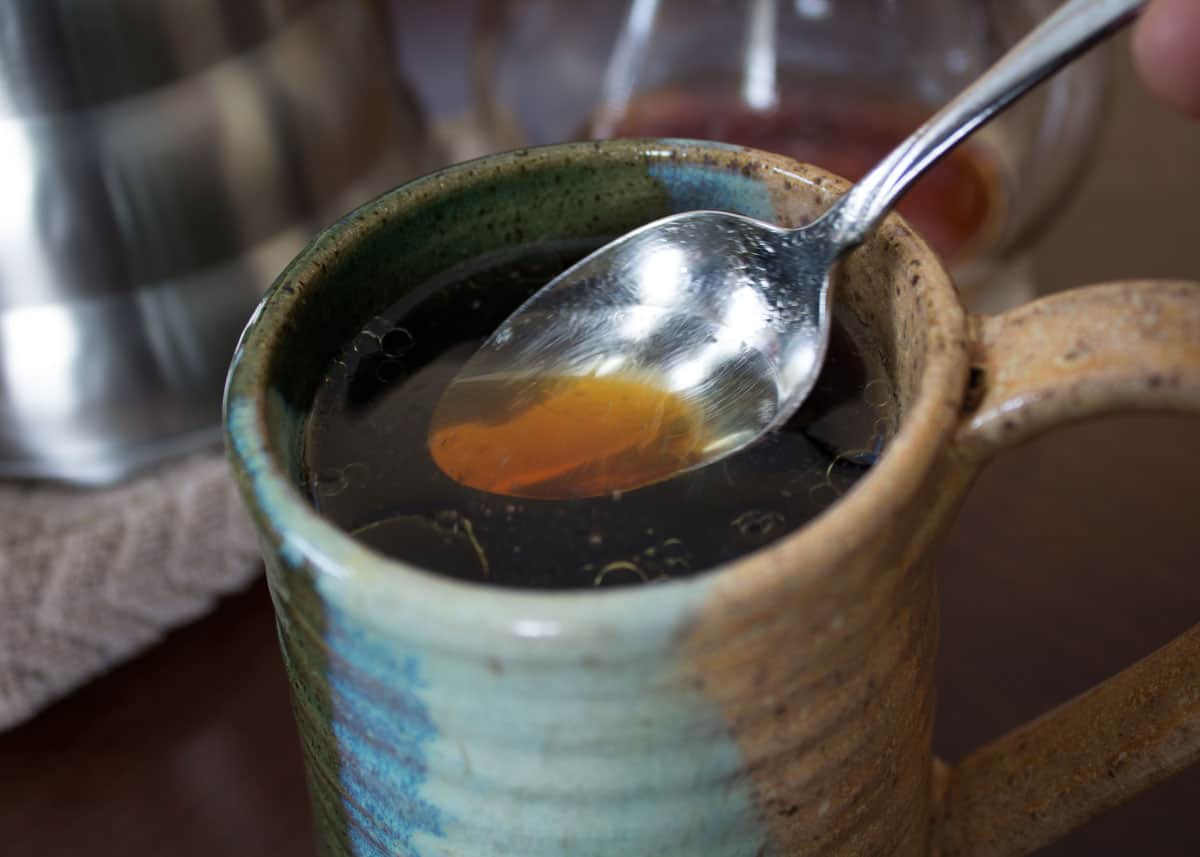
Keep reading: How much potassium is in coffee?
What are your thoughts? What would you say is the best way to sweeten coffee without sugar? Please join me in the comments.
- About the Author
- Latest Posts
Dena Haines is a co-founder and blogger on EnjoyJava – and is working to make it the best coffee blog in the world.
She also blogs about travel at Storyteller.Travel and photography at Storyteller Tech. Dena is a partner at Storyteller Media, a publishing company she started with her husband, Bryan.

D Carol
Friday 15th of October 2021
Great article. I have a question for you. You mentioned that you have IBS so you stay away from coconut sugar. My reasoning for researching today is because I am having stomach flare ups with my morning coffee and I am trying to figure out what the cause may be. (Please note that I have recently been diagnosed with IBS and I am still learning what I need to do to manage my symptoms individually). I currently use pure unsweetened coconut milk from a can and organic stevia in the raw. Since you mentioned that coconut sugar seems to bother you, I am wondering if you have the same problem with coconut milk? Thank you - D Carol.
Victor Goolsby
Wednesday 25th of August 2021
Great information about coffee